The family of the late Samsung Group Chairman Lee Kun-hee has donated some 23,000 pieces from his extensive collection of ancient and modern art.
Special exhibitions of carefully selected pieces at two state museums elicited enormous public interest.
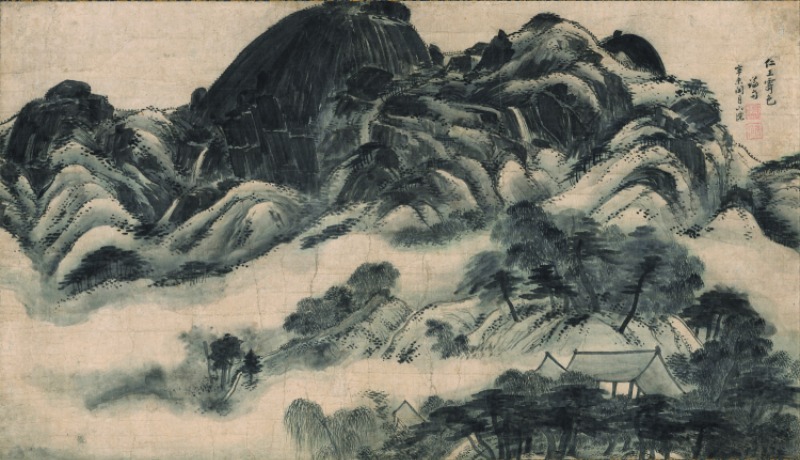
“Clearing after Rain on Mount Inwang” Jeong Seon (1676-1759). 1751. Ink on paper. 79.2 × 138 cm.A representative work of eminent Joseon court painter Jeong Seon, this ink and wash painting depicts the mist of a summer rain receding over Mt. Inwang in Seoul. Born and raised in a nearby neighborhood, Jeong captured the mountain he knew very well with bold brushstrokes. He broke away from the tradition of conceptual landscapes and advanced an approach that encouraged painters to depict the actual landscape they see.
When the late chairman of Samsung Group, Lee Kun-hee, passed away in October 2020, the vast art collection that he left behind became a hot topic of public interest and speculation. The Samsung family’s love of art goes back to Lee’s father and founder of the group, Lee Byung-chul. Lee Kun-hee and his wife multiplied their inherited collection. The public has seen some of these items before; the Leeum, Samsung Museum of Art in Seoul and the Ho-Am Art Museum (named for Lee Byungchul’s pseudonym) in Yongin, some 40 km south of Seoul, exhibit paintings, ceramics and other ancient and modern artworks from the collection. But the entire breadth of the art trove had remained undisclosed, piquing public curiosity.
Some claim that the “Lee Kun-hee collection” exceeds the artistic and cultural value of all the holdings in the National Museum of Korea or the National Museum of Modern and Contemporary Art (MMCA). Estimates of its monetary worth presumably run into trillions of won.
In April 2021, Lee’s family announced that it would donate around 23,000 artifacts and artworks from the private collection. Antique pieces were gifted to the National Museum of Korea and works by renowned Korean and foreign artists went to the MMCA. In honor of the donation, the National Museum of Korea held a special exhibition, titled “A Great Cultural Legacy: Masterpieces from the Bequest of the Late Samsung Chairman Lee Kun-hee,” from July 21 to September 26, 2021. The MMCA opened its exhibition, “Lee Kun-hee Collection: Masterpieces of Korean Art,” on July 21. It will stay open until March 13, 2022.
Scores of works by prominent modern Korean artists were donated to municipal art museums in regions from which the artists hailed: works by Kim Whanki (1913-1974) and Chun Kyung-ja (1924-201 5) went to the Jeonnam Museum of Art in Gwangyang, South Jeolla Province; paintings by Lee In-sung (1912-1950) and Seo Dong-jin (1900-1970) landed at the Daegu Art Museum; and works by painter Park Soo-keun (1914-1965) arrived at a museum that bears his name, located in Yanggu County, Gangwon Province.
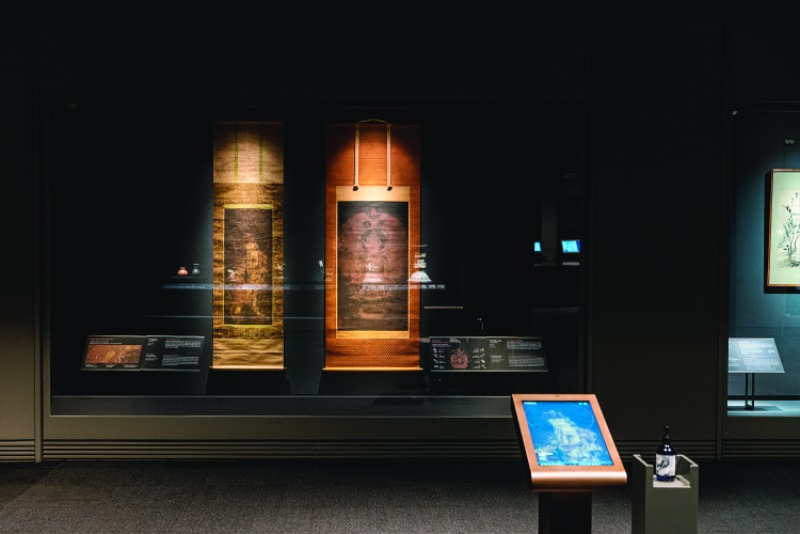
“Water-Moon Avalokitesvara” (left) 14th century. Ink and color on silk. 83.4 × 35.7 cm.Avalokitesvara is a bodhisattva who is believed to show compassion to many sentient beings, just as the moon’s reflection in the clear water can be observed in many different places. The delicate harmony of patterns and soft colors visible under the translucent garment demonstrates the exquisite beauty that is characteristic of Goryeo Buddhist painting.
“Thousand-Armed Avalokitesvara” (right) 14th century. Ink and color on silk. 93.8 × 51.2 cm.Avalokitesvara with a thousand arms is known to save humans with the countless number of hands and eyes. Korean Buddhism has a long history of faith in this omniscient bodhisattva of compassion, but this is the only extant painting of the subject. The bodhisattva is depicted with 11 sides of the face and 44 hands, each holding an auspicious .
Masterpieces
Among the donated pieces, the most significant are the artifacts and artworks that went to the two national museums, which include seminal works in the history of Korean art. The National Museum of Korea received some 21,600 artifacts that span prehistoric periods to the Joseon Dynasty (1392-1910). They range from earthenware, pottery, sculptures and wooden furniture to calligraphy and paintings. From among them, the museum selected 77 pieces for public viewing that represent the acme of aesthetic achievement and artistry of their respective periods. Some of the highlights included the ink-and-wash painting “Clearing after Rain on Mount Inwang” (1751) by eminent court painter Jeong Seon (1676-1759) of the late Joseon period; gilt-bronze Buddhist statues designated as National Treasures; and “Thousand-Armed Avalokitesvara,” a Goryeo Buddhist painting that renders the graceful beauty of the bodhisattva in elaborate detail.
The exhibition’s centerpiece was “Clearing after Rain on Mount Inwang,” which depicts the scenery of the mountain located to the west of Gyeongbok Palace in central Seoul. The painting was produced at a time when the Grand Tour was the trend among European artists, which elevated the attention paid to landscape paintings. “Clearing after Rain on Mount Inwang” is comparable to the works that Welsh landscape painter Richard Wilson produced during his visit to Italy in 1750. While Wilson’s oil paintings faithfully render the idyllic scenery with the use of true-to-life colors, Jeong used lucid brushstrokes and subtle differences in the shading of the ink to produce a realistic depiction of a misty shroud receding over the mountain that he knew well as he lived nearby.
The MMCA received 1,488 pieces from the late Lee’s collection. This is the single largest donation in the museum’s history, and more importantly, it includes some rare and iconic works from the early 20th century. The 58 modern and contemporary works featured in the special exhibition include some of the most notable pieces by artists who have made major milestones in Korean art history.
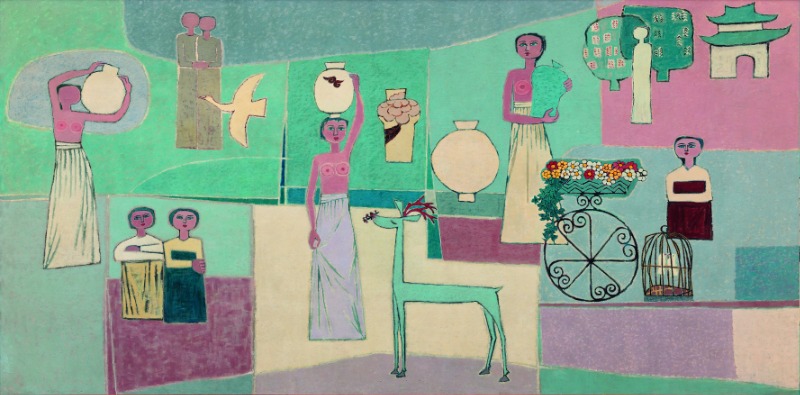
“Women and Jars” Kim Whanki (1913-1974). 1950s. Oil on canvas. 281.5 × 567 cm.
The topless women, white porcelain jars, cranes and deer featured in this painting are motifs that Kim Whanki often depicted from the late 1940s to the 1950s. Produced as a large mural, the painting evokes transcendent decorativeness through the stylized figures, s and animals facing the front or side, set against the pastelcolored background.
© Whanki Foundation · Whanki Museum
Significance
The first half of the 20th century was a gloomy period of turmoil and devastation, from Japanese occupation to the territorial division into North and South and the outbreak of the Korean War. Hence, a significant portion of artworks from this era were destroyed or lost, leaving a huge gap in the country’s art history. Under such circumstances, that a considerable number of artworks produced during this period of hardship and deprivation are being shown to the public should be held in high regard.
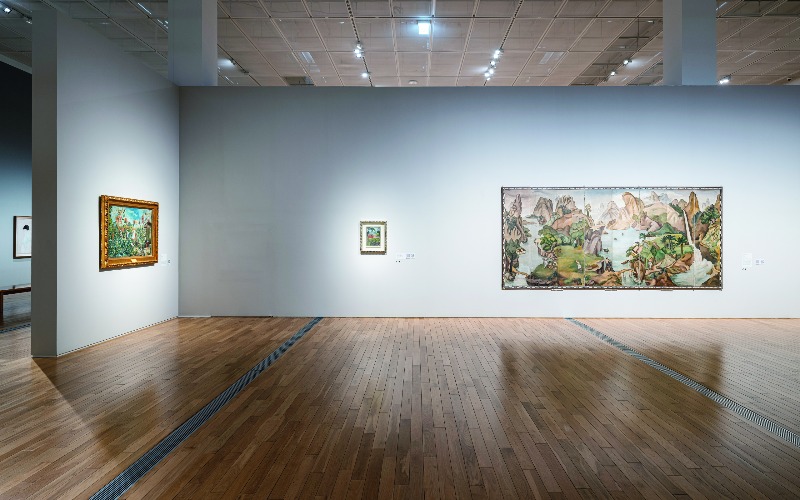
“Paradise” (right) Baik Nam-soon (1904-1994). Circa 1936. Oil on canvas. Eight-panel screen. 173 × 372 cm.
Baik Nam-soon was a first-generation Korean female painter who studied Western painting in Tokyo and Paris. The scenery depicted in this largescale painting obviously blends Eastern and Western utopias, reminiscent of ShangriLa and Arcadia. It reflects the artist’s rumination on how to work on Eastern and Western motifs and techniques. After her husband, Im Yong-ryeon (1901-?), also a painter, went missing during the Korean War, Baik moved to America with her children in 1964. Not much about her career has been known since.
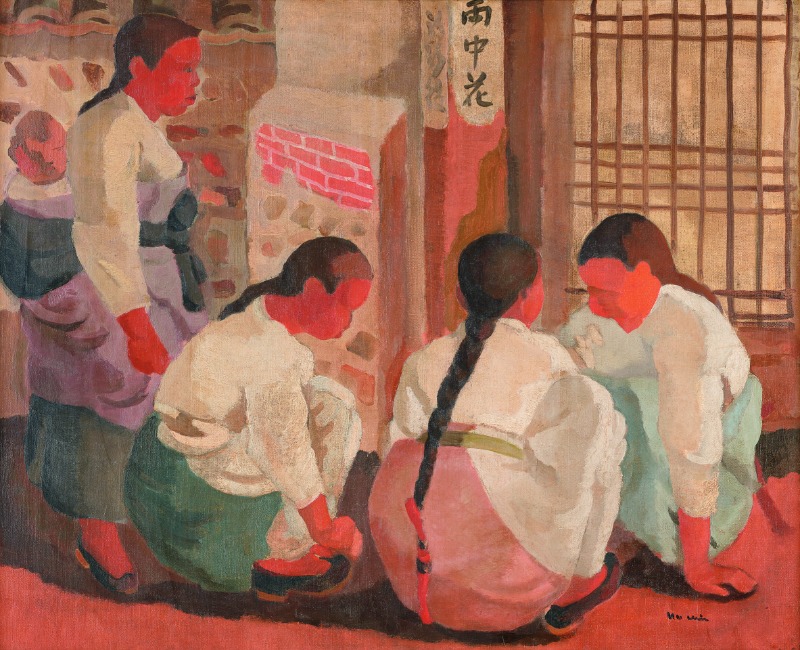
“Jackstones” (Gongginori) Chang Ucchin (1917-1990). 1938. Oil on canvas. 65 × 80.5 cm.
Chang Ucchin is recognized for his distinctive style of simple, fairy-tale like depictions of familiar, everyday subjects, such as houses, trees and birds. This is Chang’s seminal early work, which earned him first prize at an art contest hosted by the daily Chosun Ilbo when he was 21 years old. Lacking in detail but showing a good composition, the painting brings to light the artist’s efforts before he developed his signature technique.
Particularly noteworthy are “Paradise” by Baik Nam-soon (1904-1994), “Jackstones” (Gongginori) by Chang Ucchin (1917-1990) and “Echo” (Sanullim) by Kim Whanki. “Paradise,” Baik’s only large-scale work discovered to date, is an oil painting executed on a canvas reminiscent of a traditional eight-panel folding screen, a melding of Eastern and Western artistic styles. “Jackstones” is one of the precious early paintings by Chang, which won him a prize at an art contest hosted by a newspaper company when he was 21. Its realistic depiction, which recalls genre painting, is distinctly different from the artist’s heyday works marked by simplicity and child-like innocence. Kim Whanki moved to New York in 1963 and continued his work there. “Echo,” a magnum opus from the height of his career, is a dot painting that he finished in 1973, a year before he passed away. It has attracted multimillion-dollar bids at auctions in Seoul, New York and Hong Kong.
Public interest in the donated artworks is evident in the huge rush to book tickets to the exhibitions. Such an enthusiastic response stems in part from the curiosity about the art trove of the richest man in Korea, coupled with the latest boost in cultural consumption afforded by an increase in national income.
The MMCA received 1,488 pieces from the late Lee’s collection. This is the single largest donation in the museum’s history, and more importantly, it includes some rare and iconic works from the early 20th century.
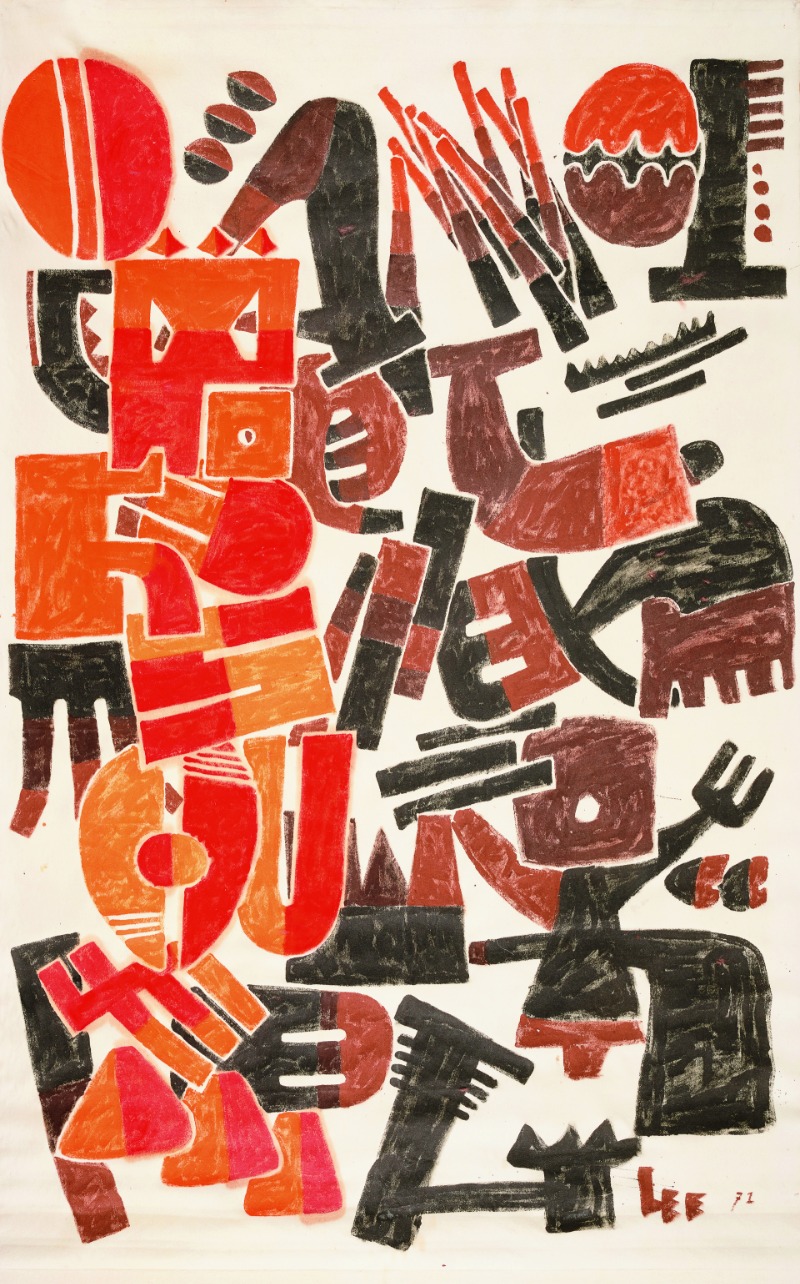
“Composition” Lee Ungno (1904-1989). 1971. Color on fabric. 230 × 145 cm.
Lee Ungno is highly regarded for opening a new horizon in Korean art with his tireless experimental spirit transcending genre and motif. The “Abstract Letter” series he began producing in the early 1960s manifests his formative experiments. Unlike his earlier works that show lyrical tendencies, the letters in this piece are more three-dimensional and abstract.
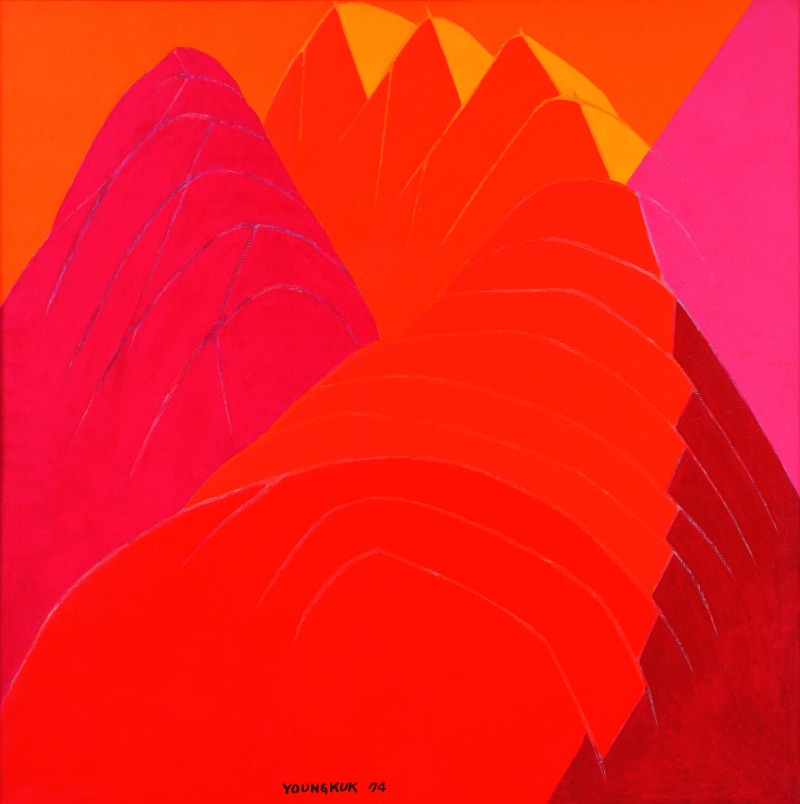
“Work” Yoo Young-kuk (1916-2002). 1974. Oil on canvas. 136 × 136.5 cm.
Yoo Young-kuk delved into mountains. He regarded them to be the epitome of the sublime mystery of nature and a medium for experiment with pictorial elements, such as form and color. Produced at a turning point during his artistic journey, the painting displays a more uninhibited form and color compared to his absolute abstraction in previous years.
Public Interest
Another inf luence has been celebrities who are well-known art enthusiasts, most notably BTS’ leader RM, who enjoys visiting art exhibitions in his free time. This has played a part in sparking a strong interest in art among the general public, particularly younger generations. Due to the COVID-19 pandemic, however, the two exhibitions had to strictly limit the number of visitors per time slot. The heated competition to make a reservation even led to incidences of scalpers illegally selling the free tickets.
Until not too long ago, many people used to liken a trip to an art gallery to a special event reserved for a small number of art aficionados. But in recent years, perceptions have gradually shifted, especially among younger generations. Going to a gallery or an art museum and dropping by a nearby café is seen as a leisure activity for anyone. Now, the unveiling of artworks from Lee Kun-hee’s collection is pushing the public’s enthusiasm for the arts several steps forward.
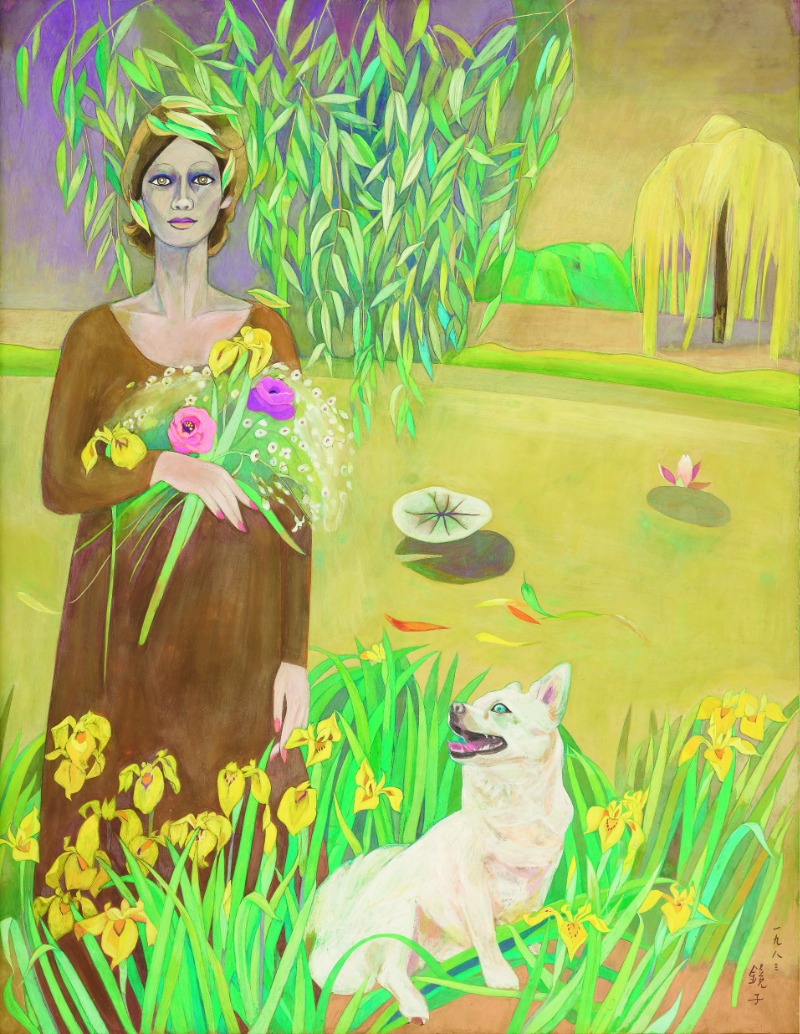
“Yellow Road” Chun Kyung-ja (1924-2015). 1983. Color on paper. 96.7 × 76 cm.
Chun Kyung-ja liked to draw women and flowers in a dreamy atmosphere, making use of traditional oriental pigments and the properties of paper. She depicted her oldest daughter-in-law in this painting, which displays her exotic style based on her color sensitivity and literary lyricism.